Diabetes is a clinical syndrome characterised by high blood glucose levels(Hyperglycaemia). It is a disorder in the normal homoeostasis of glucose metabolism, it will require a continuous regulation and monitoring once it is acquired.
As of now there is no permanent cure for diabetes. However, a person can reverse diabetes or see it go into remission. A diabetic is in remission when he/her blood glucose levels are maintained within the normal range, for at least one year without using any medications.
You may also want to read Diabetes & its types. | Shekhar’s healthcare
Early diagnosis and proper treatment can help prevent or delay the diabetes induced complications. Knowing the risk factors can help people to identify and manage diabetes before even it manifests.
What are the 10 major factors that put an individual under a risk of developing diabetes?
1. 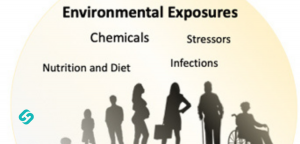
Wide geographic and seasonal variations in incidents suggest that environmental factors have an important role in precipitating this disorder. Although hypothesis abound, the nature of these environmental factors is uncertain. They may trigger SAID & SIDD (type 1 diabetes) through direct toxicity to the β cells or by stimulating and autoimmune reaction directed against β cells of pancreas. The potential environmental factors that can induce diabetes are as follows:
- Viruses such as Mumps,Coxackie B4, retroviruses, Rubella (in Utero), Cytomegalovirus & Epstein-Barr virus.
- Various dietary nitrosamines found in smoked and cured meats and coffee have been proposed as potentially diabetogenic toxin.
- Bovine serum albumin(BSA), A major constituent of cows milk has been implicated since children who are given cows milk early in fancy are more likely to develop SAID & SIDD.
- It has also been proposed that reduced exposure to micro organisms in early childhood limits maturation of the immune system and increases susceptibility to autoimmune diseases (the ‘hygiene hypothesis’).
SAID: Severe Auto Immune Diabetes
SIDD: Severe Insulin Deficiency Diabetes
You may want to read Latest Classification of Diabetes. | Shekhar’s healthcare
2.
Genetic factors account for about one-third of the susceptibility to diabetes, the inheritance of which is polygenic & multifactorial.
Over 20 different regions of the human Gino shows some linkage with SAID & SIDD , but most interest has focused on the human leucocyte antigen(HLA) region. The HLA haplotypes DR3 and /or DR4 are associated with increased susceptibility to SAID & SIDD(type 1 diabetes) they tend to be transmitted together with neighbouring islands of HLA-DQA1 and DQB1 genes.
Genome-wide association studies have identified over 65 genes or a gene regions that are associated with SIRD & MORD (type 2 diabetes), each exerting a small effect. The largest effect is seen with variation in TCF7L2. Most of the genes known to contribute to risk of SIRD and MORD (type 2 diabetes) are involved in beta cell function or in regulation of cell cycling and turnover, suggesting that alter the regulation of beta-cell mass is a key factor.
Risk of diabetes among 1st degree relatives of patients with diabetes.
| Relative with diabetes. | Overall risk for SAID & SIDD | Overall risk for SIRD & MORD |
| Single parent. | 5% | 25% |
| Both parents. | 15% | 40% |
| Twin concordance. | 50-70% | 70-90% |
3.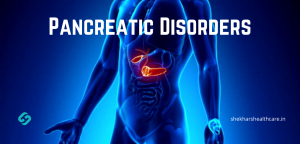
Pancreatitis, pancreatic cancer, and trauma can all harm the beta cells or make them less able to produce insulin, resulting in diabetes. If the damaged pancreas is removed, diabetes will occur due to the loss of the beta cells.
4.
Although, diabetes of any type can occur at any age, Older adults( >40-45 years) are at higher risk for the development of SIRD & MARD(Mild Age Related Diabetes) due to the combined effects of increasing insulin resistance and impaired pancreatic islet function with age.
Younger individuals (<25 years) are at risk of developing SAID, SIDD and MODY, if there is family history.
There is no gender in difference. Hence, both males and females or at equal risk of developing diabetes.
5. 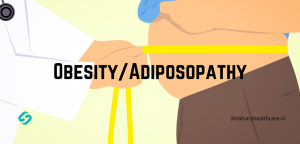
Individuals with waist circumference >102cms in females & > 88cms in males are at higher risk of developing Diabetes. This is because “Central obesity” will cause increase in CRP & decrease in Adiponectin. As a result, the receptors in adipose tissues are changed from α to β-3.
These β-3 receptors will increase Lipolysis leading to more & more free fatty acids entering liver through portal circulation. Consequently, increasing VLDL & Glucose.
The free fatty acids do not enter into the mitochondria as they are supposed to, but accumulate in the cytoplasm & form into Fatty Acetyl Co-Enzyme-A. Further, it is converted into Malonyl Co-A. These enzymes promote widespread insulin resistance.
6. 
The less active you are , greater is your risk. Physical inactivity is associated with increased insulin resistance & poor glycemic control independent of body weight. It also makes you overweight and obese, consequently putting you in higher risk.
7.
Women who have PCOS are at a higher risk of developing Diabetes & are diagnosed at an earlier age with the condition. Many women who suffer from PCOS are obese & produce slightly higher amounts of testosterone & other androgen hormones than average. The elevated levels contribute to irregular menustrual periods, infertility, weight gain, acne or excess hair on face and body. Therefore are at a higher risk of developing diabetes & other health problems.
8.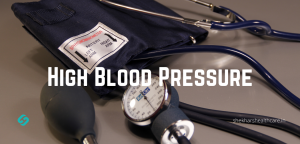
Hypertension increases the risk of diabetes & having diabetes increases the risk of hypertension. That is to say hypertension & diabetes co-occur frequently.
However, hypertension is an independent risk factor & is reported as a significant predictor of Diabetes. Having a blood pressure of >130/90 mm of hg puts you in a high risk category of developing diabetes. And diabetes will only worsen Hypertension. It’s a vicious cycle.
9.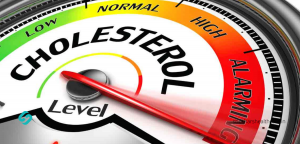
Abnormal Cholesterol & blood triglyceride levels increase the risk of diabetes. Increase in serum triglyceride levels i.e., >150mg/dl , and low levels of HDL (good cholesterol) i.e., <40mg/dl in <50mg/dl in can potentially induce diabetes. In turn, Diabetes will rise VLDL (bad Cholesterol) levels which will not just worsen diabetes but also increase risk for other major disorders.
10.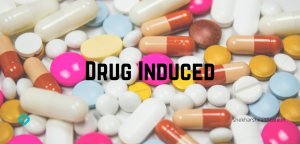
Certain drugs can aid in the development of diabetes & are called as Diabetogenic drugs. In fact, Diabetes Type 3D is also called as Drug induced Diabetes.
Some of the commonly prescribed drugs that can induce diabetes are as follows:
- Anti-Psychiatric drugs: SSRI & Olanzipine.
- Renal drugs: Thiazide diuretics & Tacrolimus.
- Endocrine Dugs: Steroids, OCP’s & Growth hormone.
- Anti HIV drugs: Protease inhibitors.
- Anti-Cancer drugs: L-Aspargenase.
- β-Agonists.
- Diazoxide.
- Phenytoin.
- Nicotinic acid.
- Statins.
- Aspirin.
- Total Parenteral Nutrition (TPN).
What are the preventive measures ?

Factors such as Environmental, Genetic predisposition, family history & age, cannot be prevented. Although, the modifiable risk factors can be prevented with certain lifestyle changes.
- Lose weight : Weight control is an important part of diabetes prevention. You may be able to prevent or delay diabetes by losing 5 to 10 percent of your current weight.
- Plan a healthy diet: It is important to reduce the amount of calories you eat and drink each day, so you can lose weight and keep it off. To do that, your diet should include smaller portions and less fat and sugar. You should also eat a variety of foods from each food group, including plenty of whole grains, fruits, and vegetables. It’s also a good idea to limit red meat, and avoid processed meats.
- Increase Physical activity to increase your sensitivity to insulin: Exercise has many health benefits, including helping you to lose weight and lower your blood sugar levels. These both lower your risk of type 2 diabetes. Try to get at least 30 minutes of physical activity 5 days a week.
- Don’t smoke: Smoking can contribute to insulin resistance, which can lead to type 2 diabetes.
- Limit Alcohol intake :Heavy use of alcohol can cause inflammation in the pancreas and limit its ability to produce enough insulin.
- Manage related conditions: High cholesterol and blood pressure are other risk factors often related to pre-diabetes and heart disease. These conditions can improve by making the changes stated above.
- Talk to your health care provider: Your Doctor may offer additional suggestions based on your medical history or other factors. He/She may also advice for diabetes screening if you are 45 years or older.
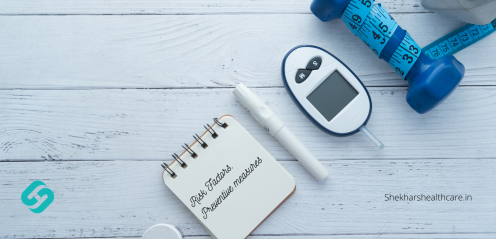
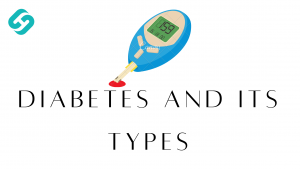
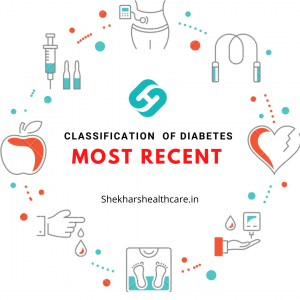

I was more than happy to find this web site. I wanted to thank you for your time just for this wonderful read!! I definitely appreciated every bit of it and i also have you saved to fav to see new things in your website. Cathrin Giraud Claudia
Thrilled to bring more content.
Hi, always i used to check blog posts here in the early hours in the break of day, as i like to learn more and more.| Melissa Rodrick Elon
Keep up the spirit. I’m pleased to have helped you.
Thank you so much! I really want to help people who maybe used to think like I did see there is a different perspective. It is an honor to support Julius. Gloriana Arvy Lundeen
Some truly wonderful content on this web site , appreciate it for contribution. Trudi Mitchell Aalst
Thank you 🙂
I am constantly browsing online for articles that can aid me. Thanks! Thia Kipper Lithea
Glad i could help 🙂
I wish to express my affection for your kindness in support of individuals that should have help on this particular issue. Your very own commitment to passing the message throughout appeared to be definitely helpful and have always enabled guys much like me to realize their dreams. Your amazing valuable recommendations means much to me and substantially more to my colleagues. Thank you; from all of us. Devin Vasily Baggett
Appreciations like these keep me motivated. Thank you.
You made some really good points there. I checked on the web for additional information about the issue and found most individuals will go along with your views on this site. Almira Aksel Wake
Sources might differ but knowledge is same for all. I just tried to present it in a simple way.
Thank you 🙂
I have learn some excellent stuff here. Definitely value bookmarking for revisiting. I wonder how so much effort you place to create this kind of wonderful informative website. Latia Keir Lynn
Happy to help. 🙂
Excellent blog here! Also your site loads up very fast! What host are you using? Can I get your affiliate link to your host? I wish my website loaded up as fast as yours lol Rosene Harmon Mallissa
Thank you for those kind words.
My host is https://infinityfree.net/
This is how a nested comment looks like! Lorem ipsum dolor sit amet, consectetur adipiscing elit. Quos nisi redarguimus, omnis virtus, omne decus, omnis vera laus deserenda est. Sullae consulatum? Multoque hoc melius nos veriusque quam Stoici. Mabel Calvin Encratis
Sweet site, super pattern, really clean and utilise friendly. Jermaine Weininger